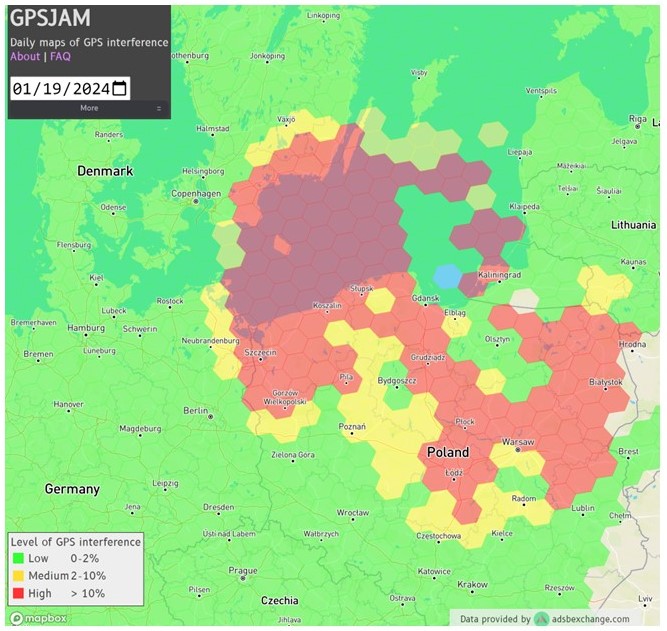Image: Baltic Jamming on 19 Jan 2024, GPSJam.org
What’s New: More validation of “the new normal.” The article has some interesting quotes from Gustavo Lopez at Septrino.
Why It’s Important: We hope this helps the idea that we can’t over-rely on GNSS the way we have been “sink in” for policy makers.
What Else to Know:
- We think we got a nod in the article! We weren’t specifically named, but “… in the U.S., a group is dedicated to PNT assurance and understanding the risks to critical infrastructure” might well be us!
- It is true there are “Many tried and tested techniques are available to detect and counter jamming and spoofing attacks.” per the article.
- Also, per the article, “Just because they may use filtering techniques doesn’t mean they can resist every type of jamming in the market.” – In fact, there is no “silver bullet.” No perfect solution.

Our society increasingly relies on satellites high above us. We use them for a myriad of applications, from communication to monitoring the state of planet Earth and forecasting the weather. We use global navigation satellite systems (GNSS), such as GPS, Galileo and BeiDou, for journey planning, whether in a vehicle or hiking a mountain trail. Constellations of GNSS satellites provide three crucial functions: positioning, navigation and timing (PNT).
Recent conflicts worldwide have highlighted how vulnerable the weak GNSS signals from satellites are to jamming and spoofing. When the U.S. Department of Defense first implemented GPS in the early 1980s, nobody could foresee when $10 GNSS jammers would be widely available or relatively low-cost units could trick GNSS receivers into believing they were in a different location.


